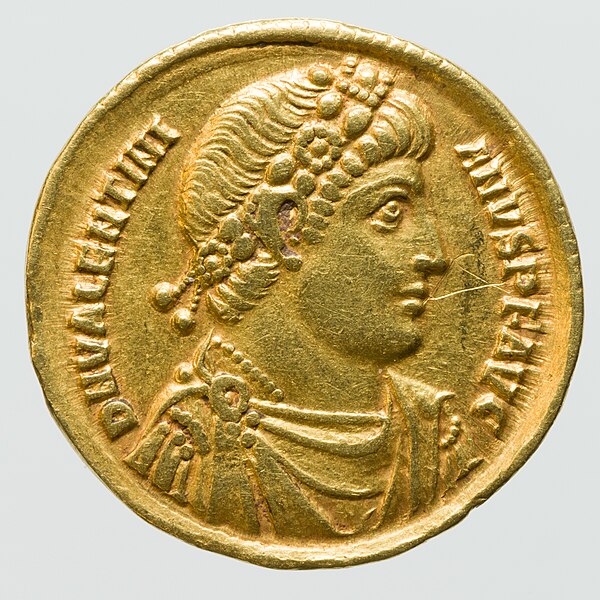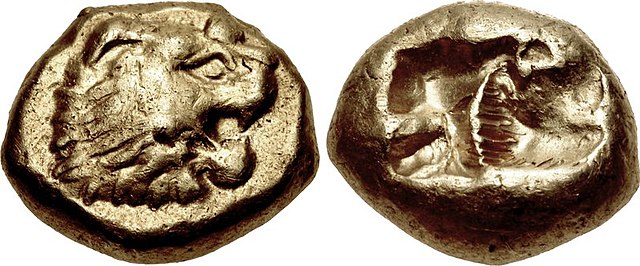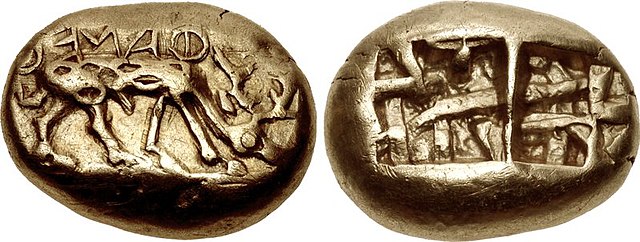A gold coin is a coin that is made mostly or entirely of gold. Most gold coins minted since 1800 are 90–92% gold (22‑karat), while most of today's gold bullion coins are pure gold, such as the Britannia, Canadian Maple Leaf, and American Buffalo. Alloyed gold coins, like the American Gold Eagle and South African Krugerrand, are typically 91.7% gold by weight, with the remainder being silver and copper.
Gold coins for sale at the Dubai Gold Souk
Persian Achaemenid Daric, c. 490 BC
Gold Solidus of Roman Emperor Valentinian II
A 20-crown gold coin from Norway. Introduced in 1875, it became part of the Scandinavian Monetary Union, which was based on a gold standard. Norwegian gold reserves included tonnes of this and other coins, backing Norway's paper money. The coin was designed for circulation: "124 Stk. 1 Kil. f. G." means that 124 pieces gave one kilogram of pure gold.
A coin is a small object, usually round and flat, used primarily as a medium of exchange or legal tender. They are standardized in weight, and produced in large quantities at a mint in order to facilitate trade. They are most often issued by a government. Coins often have images, numerals, or text on them. The faces of coins or medals are sometimes called the obverse and the reverse, referring to the front and back sides, respectively. The obverse of a coin is commonly called heads, because it often depicts the head of a prominent person, and the reverse is known as tails.
A selection of metal coins
An oxhide ingot from Crete. Late Bronze Age metal ingots were given standard shapes, such as the shape of an "ox-hide", suggesting that they represented standardized values.
Coin of Alyattes of Lydia, c. 620/10–564/53 BC
The earliest inscribed coinage: electrum coin of Phanes from Ephesus, 625–600 BC. Obverse: Stag grazing right, ΦΑΝΕΩΣ (retrograde). Reverse: Two incuse punches, each with raised intersecting lines.








